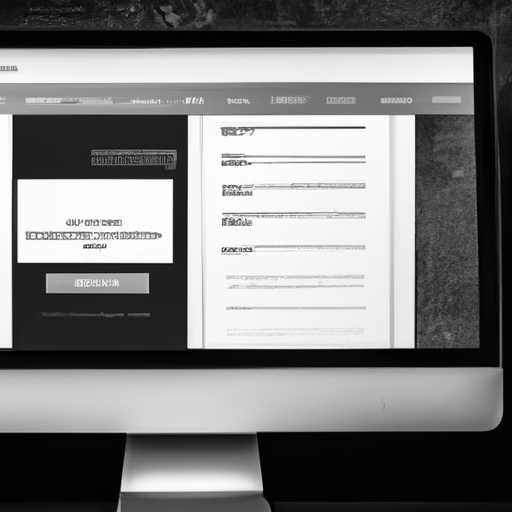This text discusses the importance of evaluating the backend of a software application. It covers factors such as response time, scalability, flexibility, security measures, and data protection.
It also provides five key best practices for evaluating the backend-including load testing and security testing.
In the world of software development, the backend is often the unsung hero that makes everything run smoothly.
While the frontend may be responsible for the user interfaceand the overall user experience, it’s the backend that handles the heavy lifting behind the scenes.
From managing databases to processing requests and ensuring data security, the backend plays a crucial role in the success of any software application.
However, evaluating the backend is not always as simple as it might seem. Considering numerous factors such as performance, reliability, scalability, flexibility, security and data protection, it can bedifficult to determine the effectiveness of a backend system.
In this article, we will delve into the importance of backend evaluation in software development and explore the key factors to consider when evaluating backend performance and reliability.
We will also discussabout the role of scalability and flexibility in backend assessment, as well as the importance of assessing security measures and data protection in backend systems.
Finally, we will provide best practices for effective backend assessment, including tools and techniques that cansimplify the process and can ensure optimal backend performance.So let’s discover the intricacies of backend evaluation in software development.
-
- 1.Understanding the importance of backend evaluation in software development
-
- 2.Key factors to consider when evaluating backend performance and reliability
-
- 3.Role of scalability and flexibility in backend evaluation
-
- 4.Evaluation of security measures and data protection in backend systems
-
- 5.Best practices for effective backend evaluation tools and techniques
1. Understanding the Importance of Backend Evaluation in Software Development
The backend of a software application is often considered the heart and soul of the entire system. It is responsiblefor all the functionality and data processing that goes on behind the scenes, while the frontend is responsible for the user interface and presentation.
While the frontend may be what users interact with directly, the backend is what makes everything work seamlessly.
Evaluating the backend of a software application is essential to ensure its efficiency, reliability, and scalability. It allows developers to identify and fix any potential problems or bottlenecks before they become major problems.
Evaluating the backend, developers can optimize the performance of the application, improve its stability and improve the overall user experience.
Backend evaluation involves evaluating various aspects of the software application, such as its architecture, database design, performanceserver, security measures, and integration with other systems.
Each of these aspects plays a significant role in the overall functionality of the application and should be evaluated in detail.
2. Key factors to consider when evaluating backend performance and reliability
When evaluating performance andreliability of a backend system, there are several key factors that should be considered.
These factors play a crucial role in ensuring that the backend is efficient, scalable, and capable of handling the demands of the application or system it supports. Here are twoimportant factors to consider
Response time The response time of a backend system is a critical factor in determining its performance. It refers to the time it takes the backend to respond to a requestfrom the frontend or client side. A fast response time is desirable because it indicates that the backend is processing requests quickly and efficiently.
This is especially important for applications that require real-time data updates or have alarge number of concurrent users. Response time evaluation can be done by performing performance tests or load tests, simulating different scenarios and measuring the time it takes for the backend to respond.
The goal is to ensure that the response time remainswithin acceptable limits, providing a smooth user experience.
3. Capacity system
It involves evaluating the capacity system to scale horizontally (adding more servers) or vertically (increasing the resources of existing servers) as demand increases.
A scalable backend ensures that the application remains responsive and reliable even during peak usage periods.
Flexibility, on the other hand, refers to the backend’s ability to adapt to change and adapt to evolving business needs.
As applications evolve and new features are added, the backend mustbe flexible enough to support these changes without significant disruption. Evaluating backend flexibility involves evaluating its architecture, design patterns, and modularization. A flexible backend allows simple
4. Evaluation of security measures and data protection in backend systems
When it comeswhen evaluating a system’s backend, a crucial aspect that cannot be overlooked is the security and data protection measures in place.
With the increasing number of cyber threats and data breaches, it is essential to carefully evaluate security protocolsimplemented in the backend to ensure the safety and integrity of sensitive information.
1.Authentication and Authorization A robust authentication system is vital to prevent unauthorized access to the backend system.Evaluation of authentication mechanisms such asmulti-factor authentication or secure token systems, can help determine the strength of existing security measures. In addition, evaluating the authorization process ensures that only authorized users have access to certain backend functionality and data.
2. Encryption Encryption plays an important role in protecting data both in transit and at rest. Evaluating the encryption methods used, such as SSL/TLS protocols or AES encryption algorithms, helps determine the level of protection providedsensitive information.In addition, key evaluation
5. Best practices for effective backend evaluation tools and techniques
Whenwhen it comes to evaluating the backend of a system or application, there are several best practices that can help ensure an effective evaluation.
These practices involve using various tools and techniques that help evaluate the performance, security, and reliability of the backend infrastructure. Here are fivekey best practices for effective backend evaluation
1. Load testing Load testing is a crucial technique for evaluating backend performance under different workload levels. It involves simulatinga large number of users or concurrent requests to determine how the system handles the load. Load testing tools such as Apache JMeter, Gatling, or LoadRunner can help measure response times, throughput, and identify potential bottlenecks or performance issues.
2.Security testing The backend assessment should include comprehensive security testing to identify vulnerabilities and ensure the protection of sensitive data. Tools such as OWASP ZAP, Nessus or Burp Suite can be used toperform security scans and penetration tests. These tools help identify common security issues such as SQL injection,
In conclusion, evaluating the backend of a software development project is crucial to ensureoptimal performance, reliability, scalability, flexibility, and security.
By considering key factors such as performance metrics, reliability testing, scalability and flexibility options, security measures, and data protection protocols, developers can make informed decisions aboutto the backend infrastructure.
In addition, using the right tools and techniques for backend evaluation can increase the efficiency and effectiveness of the evaluation process.
By prioritizing backend evaluation, software development teams can build robust and secure systems that meet the needs of users and stakeholders.
….






